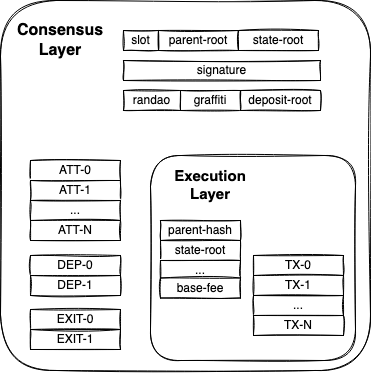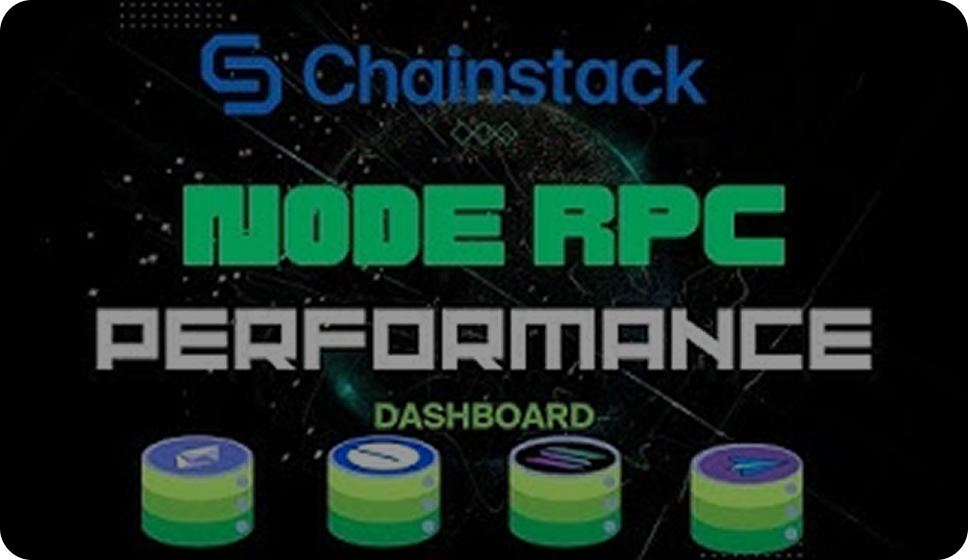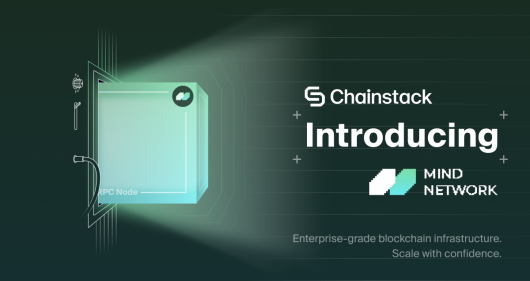The Merge: You are all set with Chainstack

Chainstack Ethereum Mainnet nodes will transition to The Merge state with zero downtime. As a Chainstack customer, you are all set and no action required from you.
Key dates on The Merge:
- October 14, 2020 — the staking deposit contract deployed on Ethereum Mainnet.
- December 1, 2020 — Beacon Chain launched.
- June 8, 2022 — Ropsten Testnet merged.
- July 6, 2022 — Sepolia Testnet merged.
- August 10, 2022 — Goerli Testnet merged.
- September 15, 2022 — Ethereum Mainnet merged.
If you want to better understand what The Merge is and how it will affect developers like you, keep reading because, by the end of this article, you will know everything you need for The Merge.
Defining the Merge: Ethereum transition to proof-of-stake
The Merge refers to the joining of the existing Ethereum chain, now called the Execution Layer, with its new Consensus Layer–the Beacon Chain. Ethereum Mainnet merged with Beacon Chain on September 15, 2022 and transitioned from Proof-of-Work to Proof-of-Stake.
With the Merge, Ethereum eliminates the need for energy-intensive mining and secures the network with staked ETH, making it more scalable, sustainable, and secure.

So, what does it mean for developers like you? Less than you would expect. In fact, The Merge has minimal impact on smart contract and DApp developers; but, there are still a few things worth noting.
How The Merge impacts Ethereum’s application layer: proof-of-work vs. proof-of-stake
Blocks restructuring
After The Merge, proof-of-work blocks become part of the new proof-of-stake blocks created by the Beacon Chain. Think of the Beacon Chain as the new proof-of-stake consensus layer of Ethereum, superseding the proof-of-work consensus layer.

Pro tip: Transactions are still processed by the same execution layer clients, such as Geth, Erigon, Besu, Nethermind and so on, so your API method calls won’t change.
Ommers production
Unlike proof-of-work, proof-of-stake does not produce ommers–also known as uncle blocks–so several fields contained in proof-of-work block headers become irrelevant to proof-of-stake.
To reduce disruption to tooling and infrastructure, the content of these fields is set to 0, or their data’s structure equivalent, instead of being entirely removed.
Pro tip: The list of uncle blocks (ommers) is empty, the hash of this list (ommersHash) becomes an RLP-encoded hash of an empty list, and finally—difficulty and nonce is set to 0.

Opcodes upgrading
Additionally, The Merge also affects the BLOCKHASH and DIFFICULTY (0x44) opcodes.
Post-merge, BLOCKHASH is forged by the proof-of-stake hashing process, so the pseudo-randomness provided by this opcode is weaker.
The DIFFICULTY opcode (0x44) is renamed to PREVRANDAO, and is a stronger source of randomness than BLOCKHASH, returning the output of the randomness beacon given by the Beacon Chain.

Block time reduction
In addition, keep in mind The Merge changes the block time. Under proof-of-work, block time was on average ~13 seconds. Under proof-of-stake, blocks come in at fixed 12 seconds, unless a slot is missed by a validator that was too slow to submit a block or is temporarily offline. However, only 1% of slots are estimated to be missed.
Pro tip: Block time is reduced by at least ~1 second. So, make sure your smart contracts take this time change into account for their calculations to prevent any errors.
New block types introduction
And last but not least, as you may know, blocks often reorged under proof-of-work, so applications typically had to for several blocks to be mined on top of a new head to treat it as confirmed. However, post-merge, this is no longer the case thanks to new and more reliable block types, namely safe head and finalized blocks.
A safe head is a block that can never be orphaned, is less likely to be reorged, and is equal to the tip of the chain under normal network conditions—that is: the fork choice rule is respected, network delays are less than 4 seconds, the network is synchronous, and at least 50% of the stake is honest.
A finalized block is a nearly attack-proof block that’s been accepted by at least ⅔ of validators, meaning an attacker would need to burn ⅓ of the total stake to create a conflicting block. Currently, the total stake is equivalent to ~$10 billion (2.5 million ETH), hence the security of a finalized block.

Pro tip: Execution Layer APIs expose safe head and finalized blocks with tags, so you can easily recognize them by their safe or finalized tags.
How do node operators go through The Merge?
As a node operator, you had at least 3 obstacles to address for The Merge:
| Without Chainstack 👎🏻 | With Chainstack 🚀 |
| Firstly, you had to install, run, and manage both a consensus layer client and an execution layer client; otherwise, there would be downtime during The Merge. | As a Chainstack customer, you do NOT have to do anything. We’ve taken care of all the infrastructure work for you. |
| Secondly, you had to authenticate both clients with the new Engine API, which you will approve with a JWT secret that both clients share to ensure secure communication. | We have run Ropsten, Goerli, and Mainnet through The Merge already, so keep operating your nodes as usual. |
| Finally, if you are currently operating any nodes on Kiln, Ropsten, or Rinkeby Testnets, you need to migrate to Goerli or Sepolia as soon as possible to prevent downtime during The Merge. | Expect Sepolia to be integrated soon. |
If you think this sounds a bit daunting, know you’re not alone. The majority of node operators usually rely on node providers like Chainstack instead of spending countless hours trying to figure out all the ins and outs of how to deploy, run, and manage a node by themselves, which makes sense considering this helps them waste less time on complicated infrastructure work and build more tech instead.
Are you sure you understand what a NaaS–Node as a Service–provider is or why developers would use it? If you want to know more, we published an article on this topic, explaining what they are, how to get started, and why increasingly more developers are choosing to use them. Check it out:

What will happen to Ethereum Testnets: Kiln, Ropsten, and Rinkeby to be shut down
Being full-featured blockchains like the Mainnet, Testnets grow in history and state over time, meaning if you’re running nodes on them, maintenance becomes increasingly expensive and time-consuming.
Because of this, client developers have decided to deprecate most testnets to maintain better the two that’ll remain post-merge: Goerli and Sepolia.
In practice, Kiln, Ropsten, and Rinkeby are currently being deprecated, but you still have time to plan your migration before they are actually shut down.
Why only Goerli and Sepolia?
Well, Goerli has a strong community and substantial infrastructure supporting it, but it’s also the most similar to Mainnet in terms of state, which is helpful if you need to test smart contract interactions.
On the other hand, Sepolia is reasonably new, so its state and history are still relatively small. Because of this, the network is quick to sync, and running a node requires way less storage.
During shutdown, stakers will stop validating transactions. We suggest you migrate to either Goerli or Sepolia as soon as possible to avoid getting stuck in a falling network.
Testnets shutdown timeline
The Merge is one of the most challenging steps ever for the Ethereum Foundation (EF), requiring extensive research, iterative improvements, and exhaustive testing. Because of this, dates and timelines can change rapidly. However, we are following the announcements of the EF very closely, and we’ll continue to update this page accordingly.
In the meantime, here’s a brief overview of the shutdown timeline:
| Testnet | Available on Chainstack? | More details |
| Kiln | ❌ | Transitioned successfully to proof-of-stake in March 2022. Currently NOT available on Chainstack. Will be shut down by the EF soon after Mainnet runs through The Merge on August 19, 2022. |
| Ropsten | ✅ | Transitioned successfully to proof-of-stake on June 8, 2022. Currently available on Chainstack under proof-of-stake. Will no longer be supported by Chainstack after shutdown in Q4 2022. |
| Rinkeby | ✅ | Will not transition to proof-of-stake. Currently available on Chainstack under proof-of-work. Will no longer be supported by Chainstack after shutdown in Q3-Q4 2023. |
| Goerli | ✅ | Transitioned to proof-of-stake on August 10, 2022. Currently available on Chainstack under proof-of-stake. |
| Sepolia | ✅ | Transitioned successfully to proof-of-stake on July 6, 2022. Currently NOT available on Chainstack. Will be supported by Chainstack. |

Pro tip: If you want to boot a node faster, Sepolia is your best choice. If you need to test protocol upgrades before deploying to Mainnet, you should use Goerli instead.
The 5 most common misconceptions about the Merge
#1 You can withdraw staked ETH after The Merge. FALSE 🚫
You can NOT withdraw your staked ETH directly after The Merge. If you want to withdraw your staked ETH, you will need to wait for an additional upgrade coming a few months later.
#2 The Merge will lower gas fees. FALSE 🚫
Currently capped at 15 transactions per second (TPS), Ethereum’s throughput will NOT increase post-merge. If you need higher TPS, you must use rollups or L2 protocols like StarkNet or Optimism.
#3 The Merge reduces ETH issuance. TRUE ✅
Every block produces 90% less ETH after The Merge.
#4 The Merge requires updates: KINDA 🤨
For users, NO.
For node operators, YES, occasionally.
However, most apps do NOT require updates.
#5 You need 32 ETH to run a node: FALSE 🚫
You need 0 ETH (Ξ) to run a non-validator node, but if you want to run a validator node, you need to stake a minimum of 32 eth. Additionally, every 32 eth you stake will increase your chances of being chosen and rewarded by the network.
Bringing it all together
From the main changes impacting both Ethereum’s application and infrastructure layer (e.g., block time reduction, testnets deprecation) to the most common merge-misconceptions surfing the web, you now know everything you need to approach The Merge truly like a builder.
Ultimately, we know all of this may still sound challenging to you, but know that, while Twitter and the Internet go wild making what’s actually going on ten times harder to understand, you can always come back to this step-by-step guide as many times as you need to really start to see the whole merge-picture; and worst comes to worst–or best perhaps–you can try our free developer plan.
Finally, don’t forget to share this article with other developers who you think might find it helpful–do them a favor, they will thank you for it! Now… back to BUIDLing!
FAQs
What is The Merge?
The Merge refers to the joining of the existing execution layer of Ethereum (Mainnet) with its new consensus layer (Beacon Chain).
Is the Beacon Chain a separate blockchain?
Yes. The Beacon Chain is a new proof-of-stake blockchain that serves as a ledger to conduct and coordinate the network of stakers of Ethereum. But, unlike Mainnet, it does not process transactions or handle smart contract interactions.
What are the benefits of The Merge?
With the Merge, Ethereum eliminates the need for energy-intensive mining and instead secures the network with staked ETH, making it more scalable, sustainable, and secure.
When did The Merge happen?
Ethereum Mainnet went through The Merge on September 15, 2022.
What do I need to do with my DApp?
You do NOT need to do anything, but make sure your the smart contracts of your DApp consider the block time change and the pseudorandomness method.
Will Chainstack be supporting Ropsten?
Chainstack will support Ropsten under proof-of-stake state until all validators are shut down in Q4 2022. However, you should no longer consider Ropsten a suitable testing environment. We encourage you to migrate to Goerli as soon as possible.
Will Chainstack be supporting Kiln?
Chainstack will NOT support Kiln. You should no longer consider Kiln a suitable testing environment. We encourage you to migrate to Goerli as soon as possible.
Will Chainstack be supporting Rinkeby?
Chainstack will support Rinkeby under proof-of-work state until all validators are shut down in Q3-Q4 2022. However, you should NOT consider Rinkeby a suitable testing environment anymore. We encourage you to migrate to Goerli as soon as possible.
How can I migrate to Goerli?
You must re-deploy the contracts of your DApp on Goerli testnet.
What are the benefits of Goerli?
Goerli has a strong community and substantial infrastructure supporting it, but it’s also the most similar to Mainnet in terms of state, which is helpful if you need to test smart contract interactions. So, to test protocol upgrades before deploying to Mainnet, you will need to utilize Goerli, not Sepolia.
Where do I get Goerli ETH?
You can use this faucet to get Goerli ETH.
Will Chainstack be supporting Sepolia?
Chainstack will support Sepolia testnet. Stay tuned.
What are the benefits of Sepolia?
Sepolia is reasonably new, so its state and history are still small. Because of this, the network is quick to sync, and running a node requires way less storage. So, If you want to boot a node faster, Sepolia is your best choice.
Future-proof your project with Chainstack
- Discover how you can save thousands in infra costs every month with our unbeatable pricing on the most complete Web3 development platform.
- Input your workload and see how affordable Chainstack is compared to other RPC providers.
- Connect to Ethereum, Solana, BNB Smart Chain, Polygon, Arbitrum, Base, Optimism, Avalanche, TON, Ronin, zkSync Era, Starknet, Scroll, Aptos, Fantom, Cronos, Gnosis Chain, Klaytn, Moonbeam, Celo, Aurora, Oasis Sapphire, Polygon zkEVM, Bitcoin and Harmony mainnet or testnets through an interface designed to help you get the job done.
- To learn more about Chainstack, visit our Developer Portal or join our Discord server and Telegram group.
- Are you in need of testnet tokens? Request some from our faucets. Multi-chain faucet, Sepolia faucet, Holesky faucet, BNB faucet, zkSync faucet, Scroll faucet.
Have you already explored what you can achieve with Chainstack? Get started for free today.
 Ethereum
Ethereum Solana
Solana TON
TON Base
Base BNB Smart Chain
BNB Smart Chain Sui
Sui Unichain
Unichain Aptos
Aptos TRON
TRON Ronin
Ronin zkSync Era
zkSync Era Sonic
Sonic Polygon
Polygon Gnosis Chain
Gnosis Chain Scroll
Scroll Avalanche Subnets
Avalanche Subnets Polygon CDK
Polygon CDK Starknet Appchains
Starknet Appchains zkSync Hyperchains
zkSync Hyperchains



























